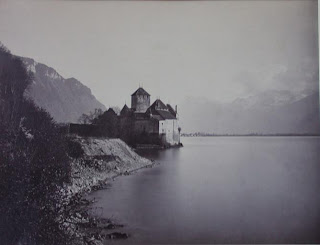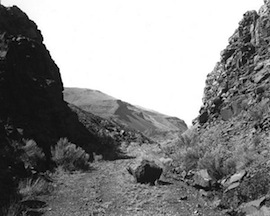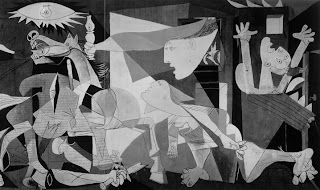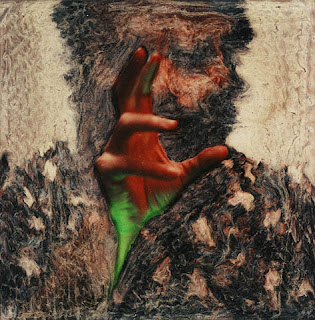Friday, 29 April 2011
Photography and painting: a symbiotic relationship.
Imagine being a portrait painter in the 1840s and watching with some concern, the growth in the popularity of this bastard child of art and science called 'photography'.
Photography, created in 1839, was tied closely to the conventions of art at the time and early photographs mimicked, not only the subject matter of paintings, e.g. still lifes, portraits and landscapes, but some even tried to look like a painting by manipulating the plate to give the impression of brush strokes. So photographers initially tried to give this new medium some status by trying to produce photographic paintings. But with the sensitivity of early plates, especially to blue, skies were often washed out. Landscape painters could show up this limitation by 'completing the picture' you, might say. For example: Gustave Courbet's 1874 painting of Chateau de Chillon
can fill in the washed out sky and mountains of Adolphe Braun's photograph of c.1863-65:
Portrait painters painted the emotion of the sitter but photography showed the real emotion, the real person and this shocked but fascinated people. Take Julia Margaret Cameron's portrait of J.F.W. Herschel of 1867 and I think you'll see what I mean:
The power of these photographs must have alarmed portrait painters. Edward Steichen's striking portrait of JP Morgan made artists go in the opposite direction, e.g. Matisse's 'green stripe lady'.
On top of this, the detail in photographs could be looked at very closely whereas, the closer you got to a painting, the more you saw the paint strokes. Painters painted the light coming from the object and close up, it just looked fuzzy.
Early photographs were in monochrome so shapes were easier to define and use, creating more artistic images such as Timothy O'sullivan's survey work:
Photographers also had to frame their image but of course artists didn't have to, allowing some 'artistic license in the accuracy of their work. In fact, when photography took over the role of 'recording the world' from painters, it allowed painters to stop representing the world and experiment. Photography could also explore the emotions that painters used and produce what is often termed 'pictorialism'. Alvin Langdon Coburn's photograph of a bridge in Venice, for example:
Some painters, quite early on, used photography to record the human body in various poses to help in the construction of paintings. Thomas Eakins is a good example of this:
At the early stages of photography, there were two things photographers couldn't do - complete abstract images and very large images. This was an area where painters could deflect attention away from photography back onto themselves. Picasso was, not only painting figures and portraits in a way that no photograph could do, but was depicting the horrors of war, as well as, if not better than any photographer.
Jackson Pollock removed any subject matter from the paiting and his image was all about the material, i.e the canvas and the paint (not to mention the evidence of his presence on the canvas). How do you compete with that photographers? Well, Lucas Samaras put his 'mark' on his polaroids as they were developing.
Did Duchamp get inspiration from Muybridge for his 'Nude descending a staircase'?
Dorothea Lang and Robert Frank may well have been inspired by social realist painters. Maybe not James Guthrie of the Glasgow Boys, but I think you can see what I'm suggesting.
Some photographers use photoshop, make up and props to get their photographs to look like old paintings, e.g. Cindy Sherman
And, most recently, painters have gone to amazing technical lengths to make their paintings look like a photograph (often a bad photograph to begin with too!). Alyssa Monks is a fine example of this craze.
Thanks again goes to Jeff Curto's History of Photography. This blog was based on his Spring 2011, class 6.
Subscribe to:
Post Comments (Atom)
















1 comment:
Lots of quite good reading here, many thanks! I had been researching on yahoo when I discovered your submit, I’m going to add your feed to Google Reader, I look forward to a lot more from you.
Post a Comment